tags: Elizabeth Dodd, Moonrise over chimney rock, photography, photoessay
Poet and writer, Elizabeth Dodd, and Moonrise over Chimney Rock.
Image: Dave Rintoul, KSU [wallpaper size].
I have mentioned Elizabeth Dodd's poetry on this blog in the past, so I thought I'd share this photoessay of hers, Moonrise Over Chimney Rock, that was recently published in Notre Dame Magazine. Elizabeth Dodd teaches creative writing at Kansas State University. Thanks to photographer Dave Rintoul, Professor of Biology at KSU, I have posted the images here that pertain to Elizabeth's piece, so you might want to leave this window open as you read her essay.
[Quotations that accompany the images below are excerpted from Elizabeth's linked essay.]
When the moon first slides its slenderest rind of lit curvature above the stony crest where we're all staring, it is almost invisible; for that precise moment, it is the essence of the ephemeral.
Moonrise over Chimney Rock, 4pm.
(Chimney Rock, left, and Companion Rock, right)
Image: Dave Rintoul, KSU [wallpaper size].
When we first arrived, a prairie falcon was perched on Companion Rock; it lifted and circled, then flew between the dual spires to regain its seat. Through binoculars I can see that the bird, still perched in the day's last, high-cast light, is gazing south and east, as if it, too, is watching the cusp of land at the spire's base where the moon will rise. From the angle where I sit, the spires almost seem to face one another, the low bulge in Chimney Rock corresponding to a curving gap in Companion Rock. Higher up along the spires, the pattern is reversed, with a bulge in the Companion echoing a concave curve in the Chimney.
Moonrise from the ancient observatory site at 4:24 PM
(the white dot on the top of Companion Rock (at left) is a Prairie Falcon!)
Image: Dave Rintoul, KSU [wallpaper size].
In the new year, I can stand in snow some 700 miles from home, the day's last light brightening the planet's crusted surface, while the fine, translucent-looking moon takes its appointed place between the Chimney spires. The moon is a traveler, too, I think, one of the most obvious sky-journeyers. Each night she moves from east to west along the familiar ecliptic, the same arc traced in daylight by the sun. Her motion is less complicated in its apparent wanderings than the visible planets, which sometimes seem to reverse their direction, doubling back before they move forward once again. She travels through the field of the so-called fixed stars, which appear to pass above us in unchanged relations, as if attached to the once-theorized Celestial Dome.
Shifting widely, assuredly, in her precise rhythms of highest and lowest declination, north and south of the celestial equator, the moon moves, counting time month by month as she goes. I wonder how she figured in the thoughts and self-imaginings of women standing on this mesa 1,000 years ago. I wonder how many such women might have walked, for several days, maybe, to come to the lunar festivals at the mesa-top. Did they come with their children, the entire family making the pilgrimage? Or was this a journey for the young, the childless, to bring them closer to the moon's quicksilver power, to stand still beneath her bright ascendency and coax forth their own fertility, an astro-biological call and response?
By now the moon has arced and lifted from the narrow foresights of the towers, and continued rising in the darkening sky. It is surprising how fast this motion is, measured against the stationary objects of our near horizon. Look away for a moment, and that moment has gone. I don't see any stars yet, though within minutes one or two will begin to appear in the deepening evening. In the meantime, the moon has left the terrestrial niche appointed as her northern home, and now moves brightly, unfalteringly, along her own invisible path.
- Log in to post comments

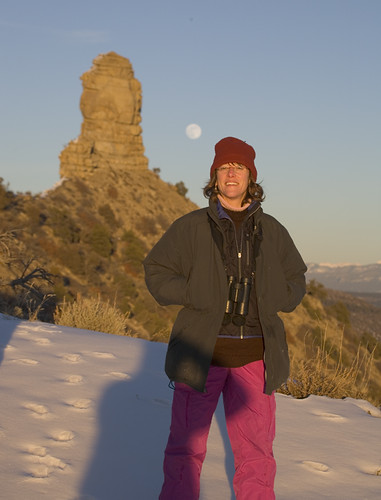
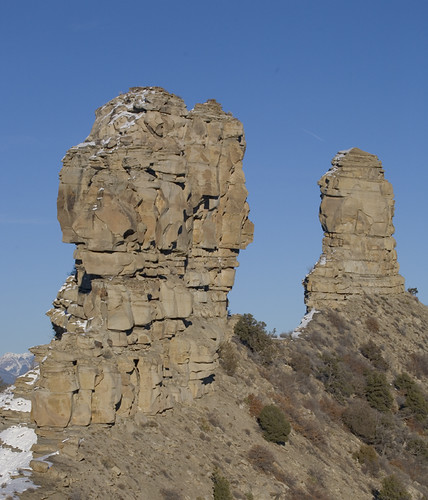

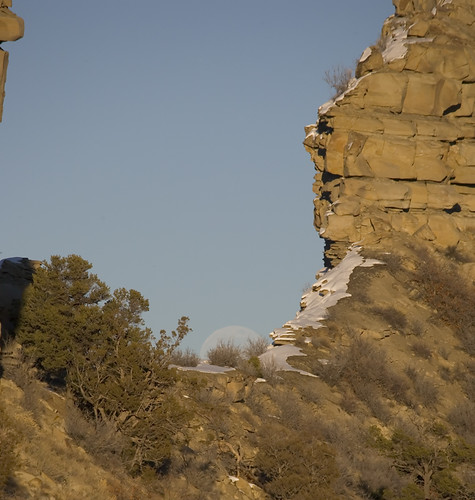
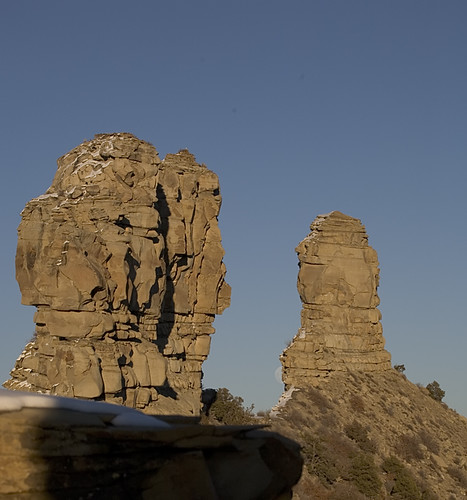

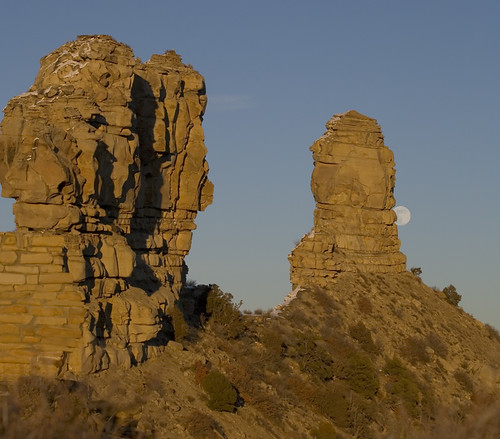
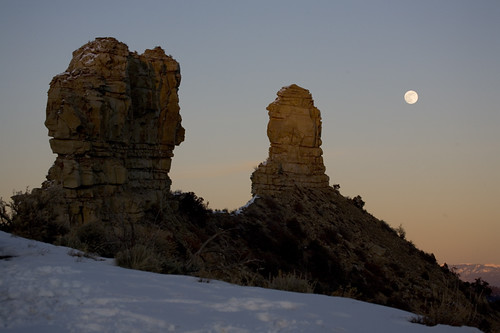
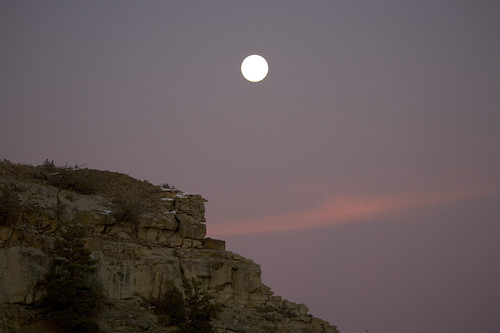
It's always fascinating to me when different parts of my life come together--I'm working on putting together an archaeoastronomy program for school groups who visit the archaeological center at which I work, and Chimney Rock is one of the sections I'm adding. It's also one for which I don't have the greatest understanding of how to present it to laypeople, so Elizabeth Dodd's essay comes at just the right time to help me.
Thanks for the post, and the beautiful pictures!